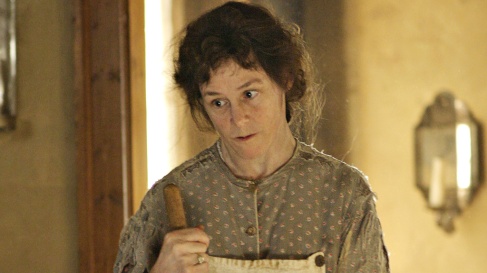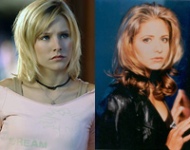

 Showtime’s Masters of Sex focuses on the journey of Doctors Masters and Johnson as they research human sexuality in the 1950s. This show might sound like the perfect avenue to broadcast an abundance of sex scenes and nudity, but it emphasizes the science of sex over its more titillating aspects. Because the Federal Communications Commission (FCC) has no editorial control over cable programming, premium channels often use this allowance to exploit female sexuality and male promiscuity. However, Masters of Sex uses these relaxed standards to present sex in a scientific manner. In short, Masters of Sex works against the typical premium cable culture of needless objectification of women to create a truly feminist show with no representative “type” of female character.
Showtime’s Masters of Sex focuses on the journey of Doctors Masters and Johnson as they research human sexuality in the 1950s. This show might sound like the perfect avenue to broadcast an abundance of sex scenes and nudity, but it emphasizes the science of sex over its more titillating aspects. Because the Federal Communications Commission (FCC) has no editorial control over cable programming, premium channels often use this allowance to exploit female sexuality and male promiscuity. However, Masters of Sex uses these relaxed standards to present sex in a scientific manner. In short, Masters of Sex works against the typical premium cable culture of needless objectification of women to create a truly feminist show with no representative “type” of female character.
Typical stereotypes such as the classic housewife, the cheating husband, and the frigid working woman all exist within the world of Masters of Sex, but rather than being caricatures, these characters are presented as valid. The classic housewife is simply a byproduct of her environment, the working woman just wants to be seen as something other than a sexual object, and so on and so forth. While the show quietly approaches the world through a feminist lens, the female characters are more than just tokens. Quotes like “I think it’s inspiring. A woman making a life for herself on her own steam.” are matched with quotes such as “You want to get somewhere, you hitch your wagon to a man.” These dialogues tend to illustrate a more well-rounded view of females, including uninhibited and refined women alike.
Masters of Sex does not pigeonhole women with its script or visuals. Because the show revolves around sex research, the sexual scenes are portrayed as a learning process rather than a way to excite viewers. Executive Producer Michelle Ashford once stated “When we did show sex, it couldn’t be the way that it’s been seen before. It had to be in the context of something bigger, whether it’s a story or whether it’s the absurdity of sex or the tragedy of sex. It couldn’t just ever be sex to be sexy because that’s … just off the point.” The show treats sex as a scientific measure and illustrates it as exactly that. It reveals the naked male form just as often as the female form and does not fragment these scenes in order to objectify the body. In this way, the show visually treats females as equals to males.
Masters of Sex is a show that is able to not only talk the talk, but also walk the walk. It practices gender equality as if it is the norm. Women are more than just the title they are given — they are complex and diverse characters. While female characters in other premium television shows might be groundbreaking, the span of the fictional gender is not nearly as encompassing as the reality. Masters of Sex is able to examine gender and sexuality in a scientific, unbiased manner. This technique sets this program apart from the typical chauvinistic landscape of premium television.









